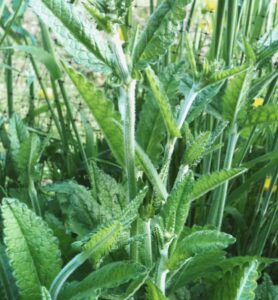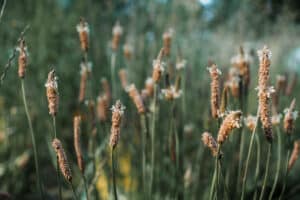Sometimes big medicine comes in the form of a small plant. Cleavers is one of those plants; humble and unassuming, yet a potent and highly useful remedy. It’s is like a water purifier for your body. It cleanses the lymphatics, flushes the kidneys, and offers pain relief for urinary tract infections.
Cleavers teaches us that it’s not always best to use the strongest remedies, but rather sometimes the milder medicines yield the best results. Sometimes, it’s the gentle ones that possess a subtle yet profound ability to restore balance and promote true healing from within.
In today’s plant profile, you’ll discover:
- How Cleaver’s salty taste and juicy leaves translate to its effects on all of the water pathways in the body
- Why you need this herb if you get chronic urinary tract infections
- Cleavers’ intrinsic connection with Venus, Pisces, and the Water Element–and how this impacts your relationships and urinary system health
- This herb’s dual moistening and drying energetics
- How to prepare a tincture and fresh juice using springtime Cleavers
Table of Contents
In the world of herbal medicine lies a lush, green plant that often goes unnoticed, yet its healing potential is nothing short of remarkable. Meet Cleavers, a humble herb that easily slips under the radar as it hides itself among (and voraciously clings to) other plants in the lushest parts of the forest.
It’s easy to think the most powerful herbs are those with antibiotic or adaptogenic properties, or the low dose botanicals that tread the fine line between poison and medicine. However, Cleavers taught me that sometimes it’s the gentle remedies that give you the best results.
I’ve filmed a few videos about Cleavers by now, but I keep being drawn to working with it again. It grows prolifically all over the Pacific Northwest, and I’ve used it extensively in my practice, often seeing profound healing results.
Another name for Cleavers is Bedstraw or Lady’s Bedstraw. It gained these names because deer like to rest on patches of Cleavers and sometimes even birth their babies on them. This herb has a traditional association with the deer, which is worth noting since animals can inform us a lot about herbal medicine.
Cleavers has a longstanding historical usage in European medicine and North American herbalism. Although Cleavers isn’t an herb you would use every day like a rejuvenating tonic, it’s easily become one of my favorite herbs over the years. It has some unique properties I haven’t encountered in any other herb, especially on the psychological level. I’ve come to really appreciate this plant, and I’m confident that by the end of this plant profile, you’ll feel the same way too.
Common name: Cleavers
Latin name: Galium aparine
Family: Rubiaceae
Tastes: Salty, Mild, “Green”
Affinities: Lymph Nodes, Throat Region, Pelvic Region
Actions: Relaxant Diuretic, Alterative, Lymphagogue
Energetics: Cooling, Moistening (short-term), Drying (long-term), Mildly Relaxing
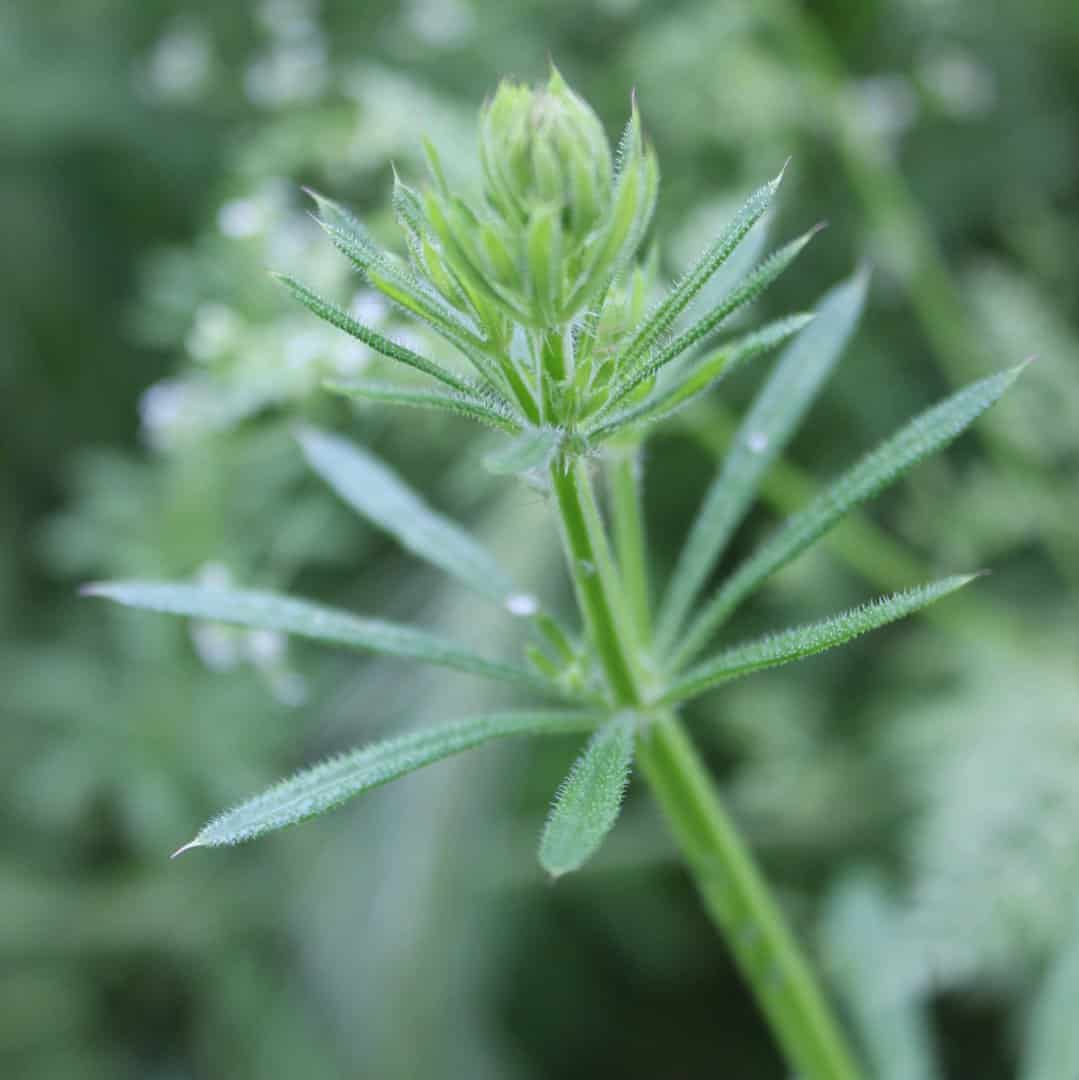
Taste
Cleavers is a mild and pleasant tasting herb. Because it’s loaded with minerals, the herb has a somewhat salty taste. The leaves are crispy, juicy, and fresh with a “green” taste, almost similar to the taste of other leafy greens. The smell and taste always reminds me a little bit of fresh cut grass.
Affinities
Cleavers works on the archetype of the water element within the body, granting it an affinity for the kidneys, urinary tract, and lymphatic system, as well as for reproductive system. Because of its action on the inner waters as a cleansing alterative, it has a reflex action on the skin. These are the primary organ and system affinities for this plant.
While sometimes we think of affinities only in terms of organs, systems, or tissues of the body, it’s also helpful to think in terms of general regions. For example, we have lymphatics scattered throughout the entire body, but when we consider Cleavers, it has a unique affinity for the throat, pelvic, and inguinal regions. These are helpful affinity patterns to know as they help you select Cleavers more specifically.
Matthew Wood taught me this herb has an affinity for the nervous system. And while Cleavers aren’t used as a calmative agent for anxiety and symptoms like that, it is said to be beneficial for inflammatory nerve diseases. If you look at the herb when it goes to seed, you’ll see how it forms little bulbs that resemble the bulbous ends of neurons. This doctrine of signature reflects this indication for the nervous system.
Another viewpoint is that the two bulbs side by side are a testicular signature. You can use Cleavers for orchitis, epididymitis, and swelling of the testicles. It also alleviates pain and lower swelling when a blow to the testicles leads to inflammation and pain radiating up the pelvic region and down the legs.
Moving further into the male reproductive system, Cleavers is indicated for prostate conditions when there’s inflammation and swelling because of damp accumulations. Prostate issues can lead to urinary tract issues. And because Cleavers works on both the urinary and male reproductive systems, it’s a unique remedy that targets the systemic cause and symptoms like incontinence, difficult urination, and strong urges to urinate. It also has an affinity for the female reproductive system, typically the ovaries, uterus, and breasts.
By purifying the lymph and draining dampness through the kidneys, Cleavers “clean” the waters within your system. When you learn to see Cleavers as working on all of the inner waters of the body, and not just on the kidneys, you gain a broader perspective on all of the ways you can use this herb. Anytime you need a diuretic to drain swelling, especially in the lower extremities, Cleavers is a key remedy to consider.
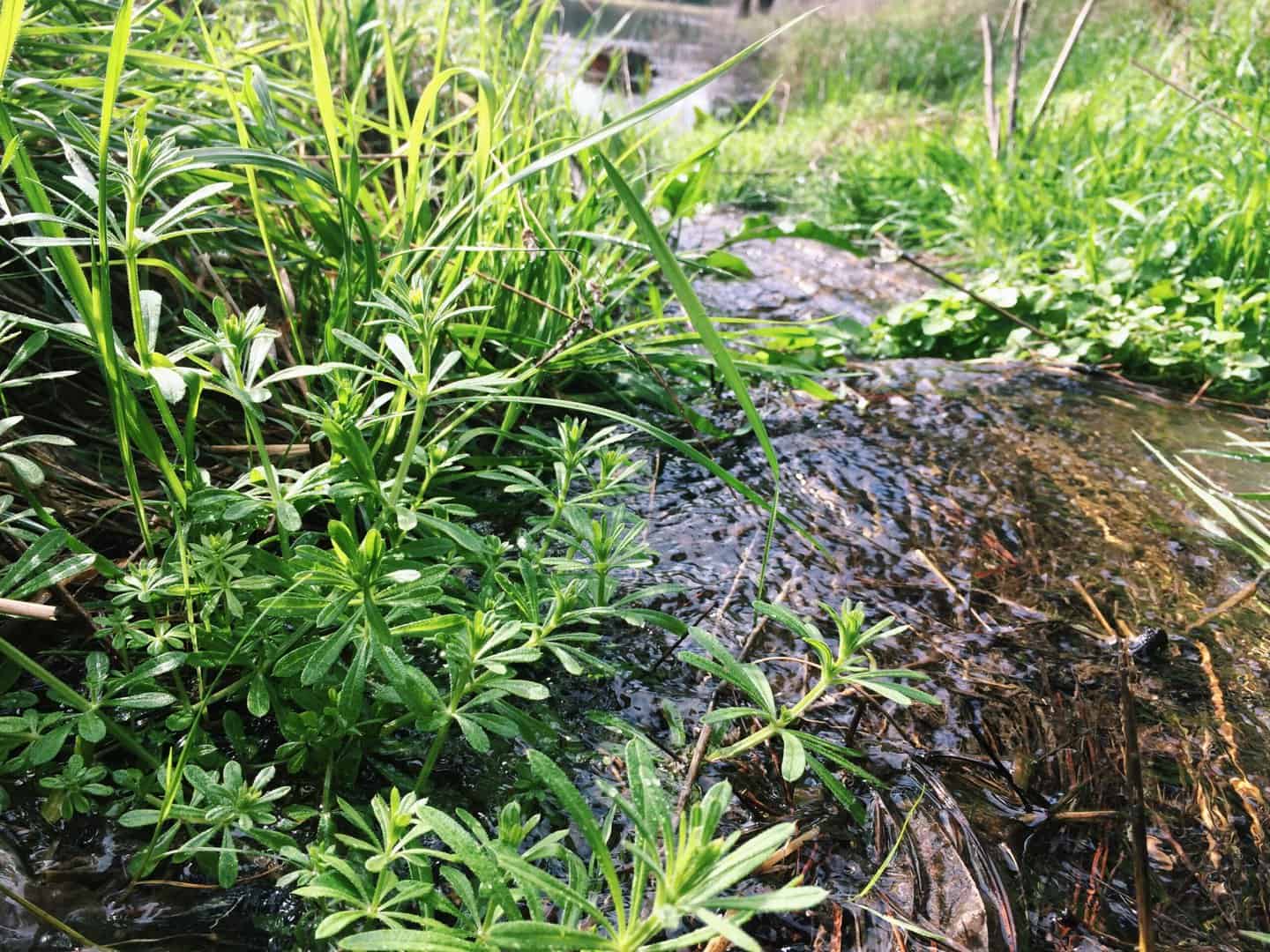
Actions
“Cleavers is one of the most effective diuretic blood purifiers known. It is very effective for the treatment of all urinary and reproductive-organ inflammations as well as hepatitis and venereal disease. It is used to treat enlarged lymph glands, cystitis, psoriasis, and skin diseases and eruptions”
~ Michael Tierra, The Way of Herbs
I consider Cleavers to be one of those herbs that really has a singular action, but with specific ways that action manifests. The primary one being alterative. This means it opens the body’s natural detoxification pathways and promotes the elimination of metabolic waste products through the channels of elimination. There are many different types of alteratives, so to me it’s a bit too vague to just know an herb is alterative, we have to specifically know what type of alterative it is.
For Cleavers, it’s alterative action manifests by also have a diuretic action on the kidneys and urinary tract and by supporting the lymphatic system as a lymphagogue. In this way from my perspective if is working on cleansing and purifying the inner waters of the body. To be more specific, it has a soothing, cooling relaxant diuretic effect (in contrast to a hot stimulating diuretic such as Juniper berry).
And although Cleavers isn’t necessarily antimicrobial, it supports your immune system by cleaning the lymphatic system. It’s the perfect remedy for hot, irritated, and inflamed UTIs with symptoms like burning upon urination and swollen lymph nodes in the inguinal region. I’ve used it many times in formulas for this pattern and it is very effective.
This fresh, green herb is one of my favorite remedies for the lymphatic system because it’s gentle yet effective. Although you may be tempted to reach for the hardest-hitting lymphagogue herbs, such as Poke (Phytolacca decandra), you should always use the mildest remedy that can achieve the desired healing outcome first.
I think this is an important principle in holistic herbalism in general. Always go for the gentlest remedies first. If Cleavers does the job, you don’t need to use a harsh herb like Poke. Sometimes using a strong herb can be harmful, especially for people with a delicate, sensitive, or weak constitution. Cleavers is a great choice because it’s so gentle, yet so effective at cleaning the lymph.
I use Cleavers for lymphadenopathy, specifically for throat infections like tonsillitis and strep throat. It’s a classic remedy used for diphtheria, which we don’t really see too much anymore. It reduces swelling in the tonsils and adenoids by clearing stagnant fluids from the lymphatic system. Although some consider Cleavers an immune stimulant, I see its effects on the immune system being a result of its lymphatic properties since these two systems are closely connected.
So if we think of it acting on the inner waters of the body (as a lymphagogue and diuretic), it helps to consider pathological patterns involving fluids. You can use Cleavers any time there’s a condition characterized by fluid stagnation that leads to growths or hardened masses. In the female reproductive system, this can be uterine fibroids and ovarian cysts. In the breasts, it can show up as mastitis and lymphatic swelling. Because of its cleansing properties on the lymph, Cleavers is also indicated for hot, irritated, and damp skin conditions such as boils and cystic acne.
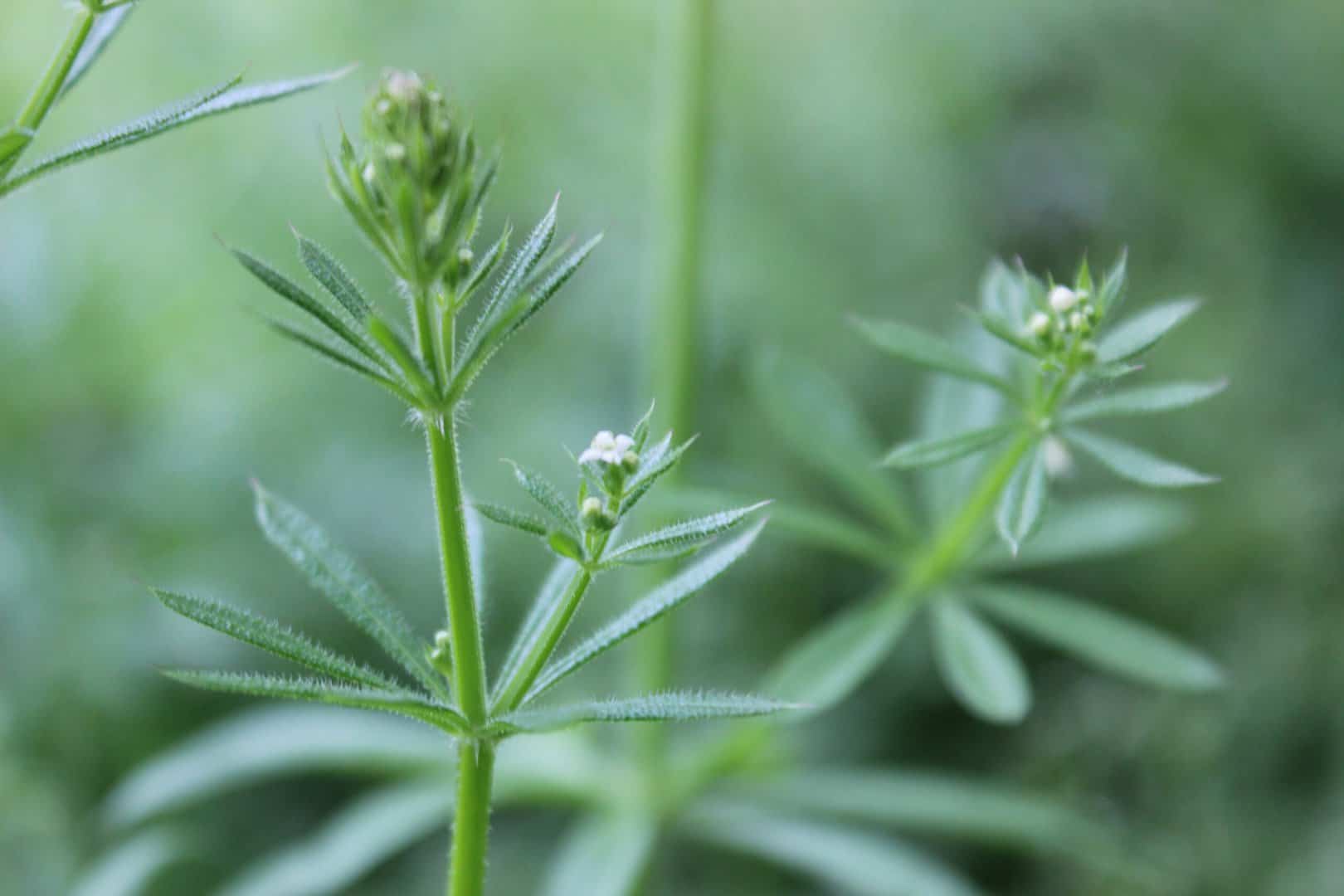
Energetics
The effect of Cleavers on temperature is quite clear, as it’s noticeably cooling to tissues that are hot, inflamed, and irritable. This is particularly notable in the urinary tract (such as burning pain upon urination). But its action on moisture is a bit more interesting (and slightly confusing at first).
Some authors say Cleavers is moistening, others say its drying. Well if that’s not totally confusing I don’t know what is?! How can something be moistening and drying at the same time? These discrepancies can be remedied by looking at a few different patterns in how plants operate. In the case of Cleavers, I find it helpful to consider the short-term, acute action of the plant in contrast to the longer-term effects.
In a short-term usage situation, Cleavers is very nice to moisten, lubricate and cool down tissues that are hot, dry, and irritated. But, consider the fact that its a diuretic and alterative that is increasing excretion of fluids from the body… that is naturally going to dry us out. So I think of it as short-term and locally moistening, but over the long-term it will be constitutionally drying.
Because Cleavers has such an affinity for the urinary tract and is cooling and moistening, it’s an excellent herb for hot, irritable, and dry inflamed urinary tract infections. It cools heat, lessens irritation, moistens tissues, and provides localized lymphatic support. Because it’s drying in the long term, it’s generally better to use Cleavers for a short period instead of a long one like you would with an adaptogen. That is, unless you’re treating a deeper condition such as ovarian cysts, uterine fibroids, and other deeper levels of dampness and stagnation. Lastly, although Cleavers isn’t necessarily antispasmodic, it’s categorized as a relaxant diuretic by the eclectics and the physiomedicalists. And such, we use it for tense, hot urinary conditions.
In the Ayurvedic tradition, Cleavers lower excess pitta and kapha but can increase vata. This herb balances pitta because of its cooling properties, which lower heat and inflammation. It’s also a valuable herb for kapha since it clears away dampness and stagnation–a pattern this dosha is prone to. Cleavers increases vata over time because of its long-term cooling and drying properties.
Regarding the tissue state model, Cleavers is indicated for dry/atrophy and damp/stagnation. Its short-term moistening effects hydrate dried and irritated tissues, which encourage healing and regeneration. Its main effects shine with damp/stagnation, where it ushers out metabolic waste products as a diuretic and supports a healthy lymphatic system as a lymphagogue. It will also help sedate the inflammation and irritation of heat/excitation.
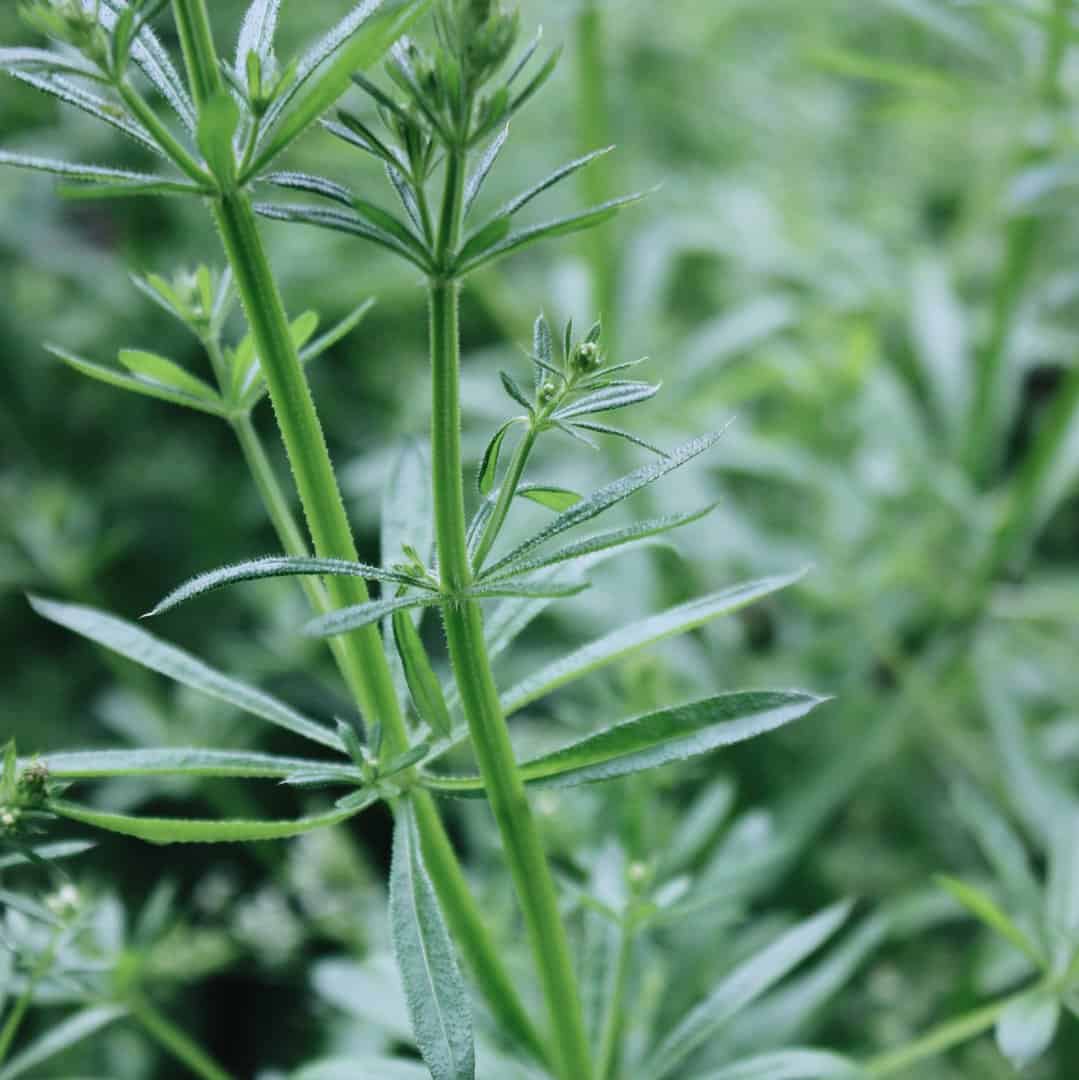
Psychological and Emotional Aspects
Throughout my practice, I’d often find myself speaking with women who complained of two things side by side: Chronic UTIs and bad relationships. After enough time, I started to notice that they shared the same constellation of symptoms.
These women often described scenarios where the men they were in a relationship with were abusive, manipulative, or controlling. Or less dramatically, they were simply entangled in their relationship, in a way giving up a part of themselves to be in the relationship and losing themselves in it. The common denominator, these folks felt stuck in an unhealthy relationship and unable to get out. At the same time, they kept facing urinary tract infections that would come back no matter what they’d try.
I realized that the common denominator behind both patterns is a dysfunction of Venus. This planet governs relationships and how we relate to each other. Interestingly enough, it corresponds anatomically to the urinary tract.
Cleavers became my go-to spagyric essence for this pattern–not only because it works on the urinary tract but because it balances the Venus archetype as a whole. If you look at how Cleavers grow, it clings and sticks to the things around them. This “clinginess” mirrors the codependency and lack of clear boundaries these women faced in their relationships.
Taking the spagyric essence led to a few different outcomes. Sometimes the women would “wake up,” see how unhealthy the relationship was and end it. In other cases, they established healthier boundaries for the continuation of the relationship and were able to work out the issues. In either scenario, taking Cleavers led to a fundamental change in the nature of their relationships for the better. In essence, Cleavers helped them disentangle themselves from toxic relational patterns, develop healthier boundaries, and return to the self.
Relationships can overwhelm your heart, pulling it in different directions. This is especially true if you love someone–even if they don’t treat you well. You may know logically that the dynamic isn’t healthy, but it’s not enough to know it. The heart can feel confused and get tangled up, similar to how Cleavers clings to the plants near it and can grow into a tangled mess.
Cleavers detangle you from complicated relational dynamics where you’ve lost your sense of self with another so you can make healthy choices. I’ve seen the power of Cleavers shine in countless cases of relational enmeshment, codependency, and unclear boundaries. The spagyric essence is particularly powerful because it doesn’t just act biochemically within your system but on the archetypal energy of Venus as a whole. Once Venus was rebalanced, the UTIs and toxic relationship patterns stopped occurring.
Seeing these results from Cleavers was astounding because I saw the archetypal medicine balancing Venus on every level–-physiologically, emotionally, relationally, socially, and physically. That’s the power of working with spagyric essences, especially with complex planetary imbalances like this.
Alchemical Correspondences
As you might expect, I associate Cleavers with Venus for a host of reasons. For one, it has a diuretic effect and strong association with the kidneys and urinary tract. Interestingly enough, Venus is at its strongest in the zodiac sign of Pisces (it’s sign of exaltation), which is associated with the lymphatic system. Pisces represents the fish and symbolizes water, which connects to the herb’s main Element.
As discussed earlier, Cleavers doesn’t only affect the urinary tract and kidneys. It works on the entire Venusian pathway. The way in which it treats heat, irritation, aggravations and infections shows a Venusian property being used to balance an excess of Mars (antipathy). When you prepare a Cleavers medicine following the alchemical tradition, it gains a certain magical quality. This not only changes your physical self but also has an impact on your psychological, emotional, and spiritual aspects. It might even have the potential to influence the environment around you.
Cleavers is associated with the Water Element, as evident from its effects on the lymphatics, kidneys, and urinary tract. Each of these affinities are governed by the Water Element because they eliminate fluids from the body. The kidneys, in particular, control and regulate the Water Element in the body.
Cleavers help restore balance by balancing dampness, stagnation, and the build-up of fluids and waste products. By doing so, it can treat infections that occur when excess fluids and waste create a damp environment where bacteria can thrive. This herb primarily acts on the Water Element by cleansing the lymphatic system, urinary tract, and the female reproductive system, which is also associated with this Element.
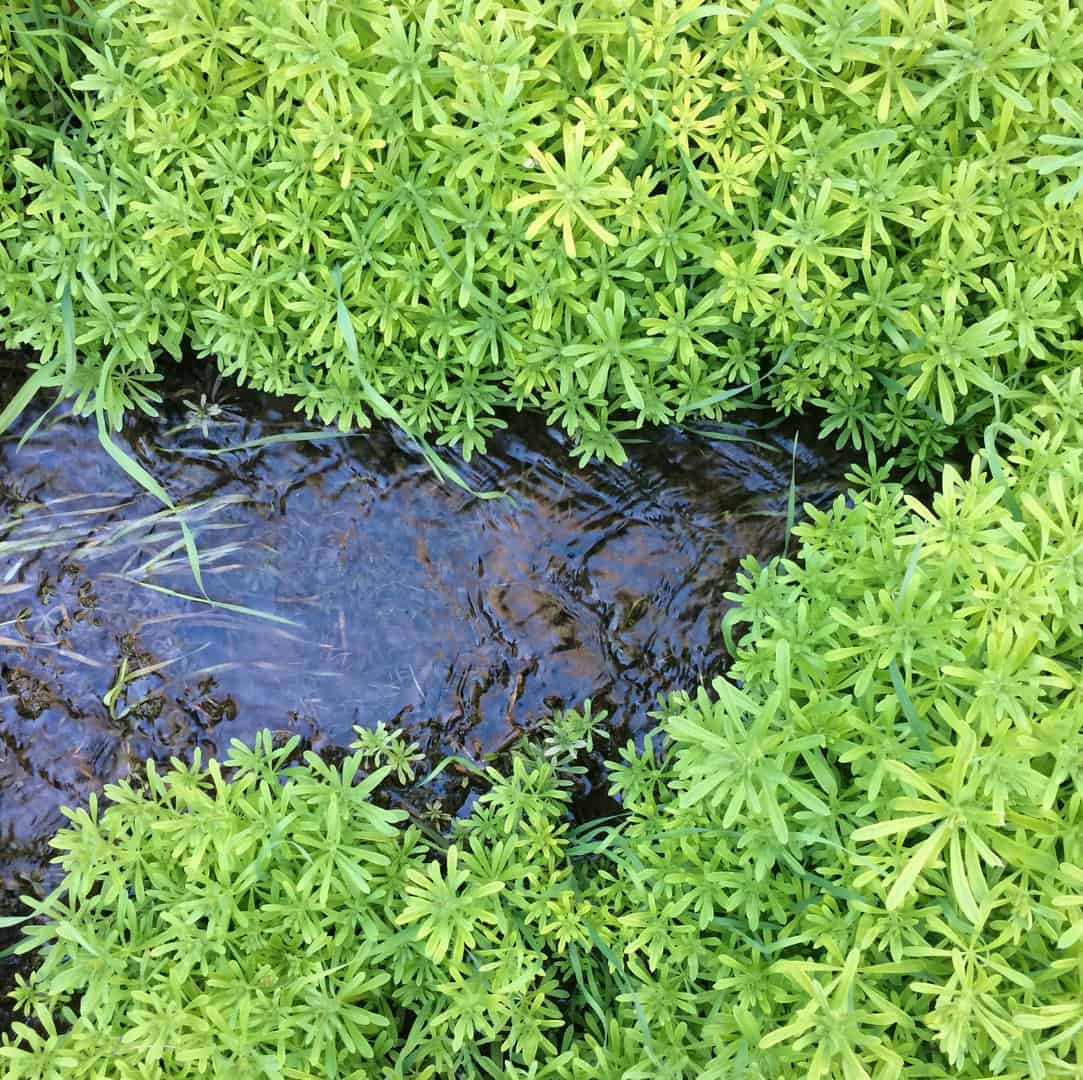
Appearance and Environment
Cleavers loves to grow in lush woodland environments and moist, shady forest areas. There’s a certain lushness to the spaces where Cleavers grow. I think this herb favors these environments but also contributes to the lushness of these landscapes. These are also signatures of the Water Element and Venus correspondences.
This herb has tall and slender stems with leaf whirls that go around it. If you touch the leaves, you’ll notice they’re sticky and cling to your finger like Velcro. Cleavers grow by sticking and climbing onto the other herbs growing near them and can get really tall depending on the height of the plants growing nearby.
It can be tricky to harvest Cleavers because you tend to gather all of the other plants they stick to. You might end up with a big, tangled mess. So it’s important to take your time harvesting this herb carefully to make the garbling process easier later on. Typically I’ll simply make sure I’m only grabbing the Cleavers and gently pull the whole thing up. If some grass or other herbs come with it, I’ll remove them right then and there, as the more of this plant you put together the more tangled up it gets.
Preparation
It’s best to use Cleavers fresh. And although I almost always prefer fresh plant preparations over dry, I’d go as far as to say that Cleavers become somewhat useless when dried. Because you need to use fresh Cleavers for its medicinal properties, the best time to collect them is in the spring before it sets flower and goes to seed.
You can prepare Cleavers in two main ways: as a tincture and as a succus. It is a very water rich herb, so you have to make sure you use a high enough proof alcohol so you optimally preserve it. Yet, you don’t want to go so high, because the constituents aren’t very soluble in super high proof alcohol. I prefer to prepare it fresh at a 1:2 ratio with a mid range alcohol, around 50% or so. This typically dilutes down to about 30% which is ideal.
Alternatively, you can prepare a succus, which means “juice” in Latin. To prepare a Cleavers succus, run the herb through a juicer and add enough alcohol to bring it up to around 30% to effectively preserve it. Anything much lower than 30% will ultimately spoil. If you prefer an alcohol-free succus, you can freeze the juice in an ice cube tray and pop a cube into a cup of hot water whenever you need it. Cleavers is effective by itself but also combine well in alterative and urinary tract formulas.
Cleavers is a small herb with big medicine. I love this plant because it taught me that sometimes you can reach the biggest results with your healing by using a gentle approach. Within gentleness lies strength, and I couldn’t think of an herb more perfect than Cleavers that expresses this sentiment.

Lymphagogue Compound
33% Calendula (Calendula officinalis)
33% Red Clover (Trifolium pratense)
This broad-spectrum lymphatic formula combines 3 cooling remedies that not only work on the lymphatics but on the kidneys, liver, and bowels. You can use this lymphagogue formula to cleanse metabolic waste products and stagnation from lymphatic tissue found throughout the body.


